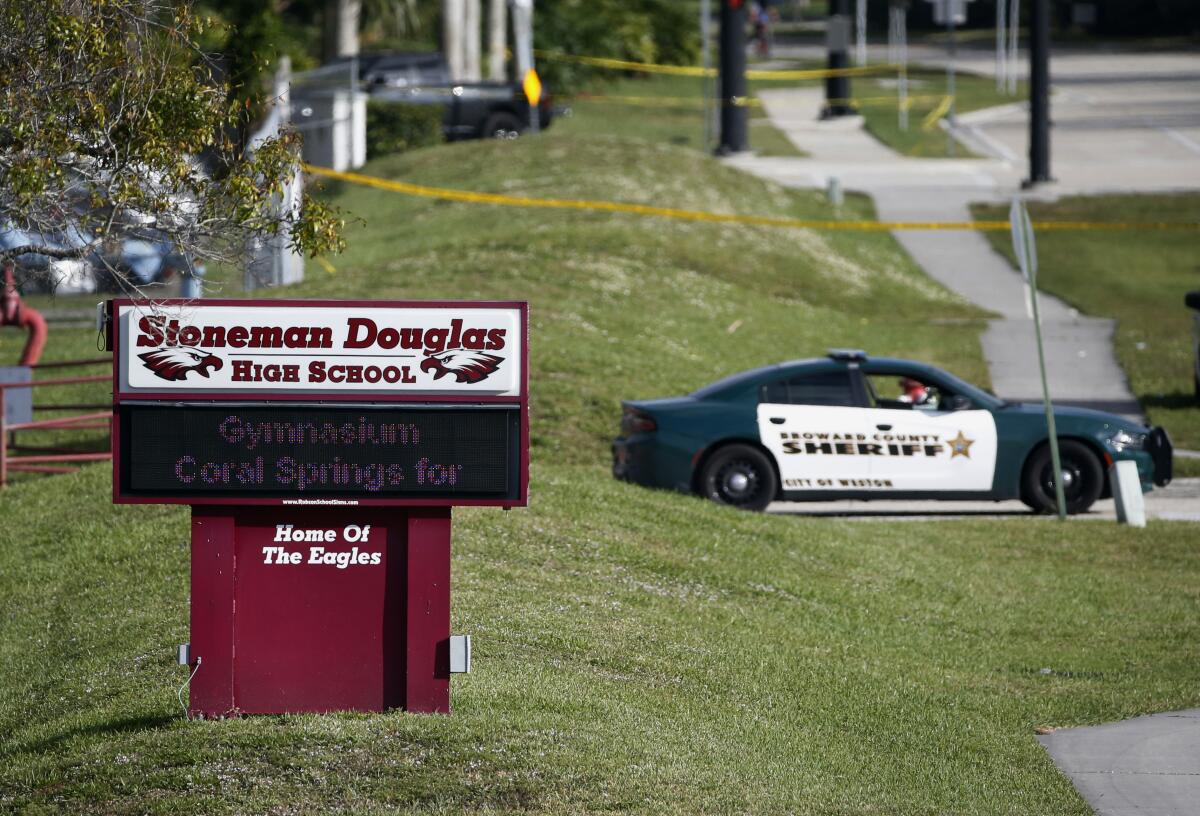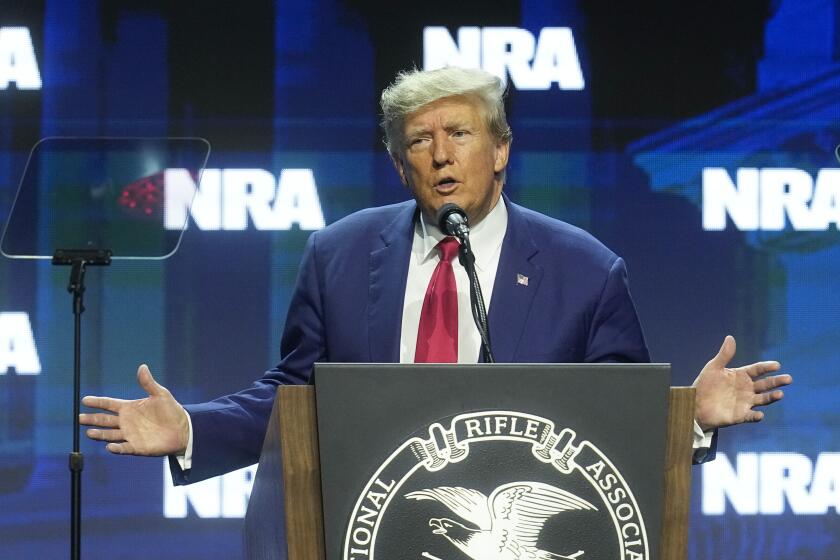Editorial: Biden should make gun-violence reduction a national priority

A curious thing happened last year while the nation endured a string of COVID-19 lockdowns. Mass homicides — four or more dead — declined by a third from 2019, while mass shootings — in which four or more people are wounded but not necessarily killed — jumped nearly 50%, according to data maintained by the Gun Violence Archive. At the same time, suicides by firearm — despite all that emotional stress and domestic isolation — remained steady at about 24,100.
Why was that? Experts offer different speculations. Fewer interactions among people outside the home reduced the possibility of, say, school or workplace shootings, but more hours spent in close quarters inside the home exacerbated interpersonal conflict at a time when more people were buying more guns (more about that in a moment). But why didn’t gun suicides increase? Better data collection and focused research could shed light on these issues and guide policies aimed at reducing gun violence in a country awash in firearms.
But 2nd Amendment hard-liners such as the National Rifle Assn. have worked hard to muzzle research and derail discussions among officials over how our gun policies affect public safety and public health. Their obstinacy has stymied efforts to balance the interests of gun rights adherents against the rights of the rest of us to not get shot as we go about our daily lives.
Khashoggi’s killing called for more accountability.
And our potential exposure to gun violence is only getting worse. Since the initial COVID-19 shutdowns last March, Americans have engaged in gun-buying sprees — by existing gun owners and tens of thousands of first-time purchasers — driven by fear of social breakdown from the pandemic, the widespread anti-racism protests, and the storming of the U.S. Capitol two months ago by right-wing insurrectionists.
Meanwhile, Arkansas just joined the growing list of states with a “stand your ground” law allowing people to use guns if they feel threatened — even if they can safely walk away from danger. Researchers have found that these statutes haven’t decreased violent crime (and in some cases have increased gun violence), contrary to their backers’ promises, and that white people were more likely to successfully use the defense than people of color.
Such is the pernicious nature of fear. To guard against the specter of social collapse, people buy guns, which then are more likely to be used to kill a family member or commit suicide than to defend home and hearth from the thundering hordes.
So, yes, in the name of fear more Americans have been arming themselves with more guns, thus putting themselves or loved ones at a higher risk of death by gunfire. That reality, backed up by numerous studies, apparently matters less than the unsubstantiated fear that Armageddon may be just around the corner.
World governments and markets must move quickly to replace fleets of climate-warming motor vehicles with zero-emission models. It will not be easy.
This is not a new problem, just a fresh wrinkle in a continuing crisis. Yet because of the intransigence of the 2nd Amendment hard-liners, the federal government has no coordinated approach to examining the roots of gun violence and the links between easy access to firearms and suicides.
Campaigning for president, Joe Biden pledged to move forcefully to try to address the problem in multiple ways, including restrictions on so-called assault weapons and mandatory background checks, which are laudable steps. But he must go further in search of new data and new answers.
March for Our Lives — a youth-driven gun policy group that arose after the 2018 massacre of 17 people at Marjory Stoneman Douglas High School in Parkland, Fla. — and a small group of congressional Democrats have urged the White House to appoint a Cabinet-level gun violence policy director to help coordinate research and policies across federal agencies.
They also want Biden to convene a multi-agency task force to explore how the government can better share information, plans and policies across departments. Those are simple, basic steps. To craft policy we need to understand the nature of the problem, and reliable studies on gun violence are woefully rare, as the Rand Corp. has pointed out.
A White House office dedicated to the issue, similar to the White House office focusing on climate change, would put a heavy thumb on the bureaucracy of government and also signal to the public that the administration recognizes the critical importance of addressing gun violence, which has killed far more people in the U.S. since 1968 than have died in war combat.
But to make it work, the policy director would need real authority and a commitment from Biden that he would act on the recommendations — including devoting sufficient funds, which may require a congressional buy-in — and use his bully pulpit to lead the nation to better-informed policies designed to protect us from our gun-toting selves.
More to Read
A cure for the common opinion
Get thought-provoking perspectives with our weekly newsletter.
You may occasionally receive promotional content from the Los Angeles Times.












